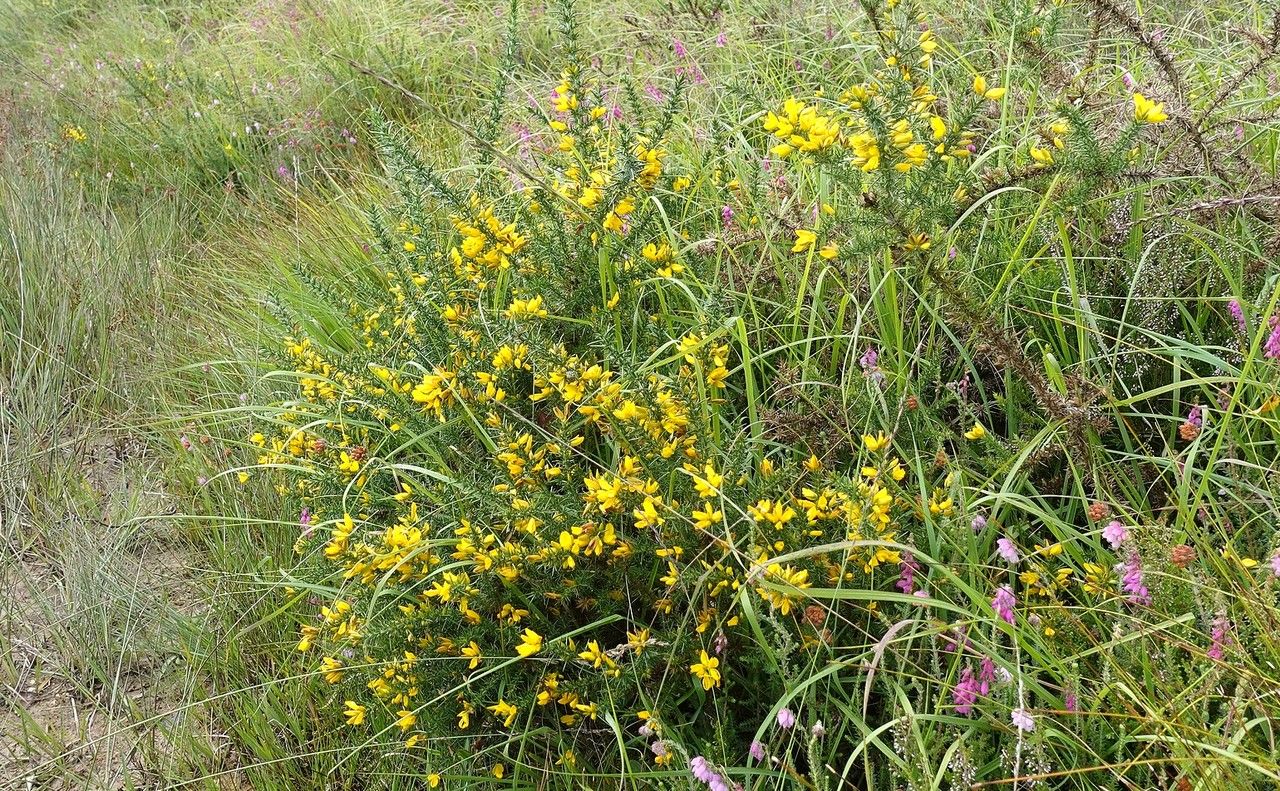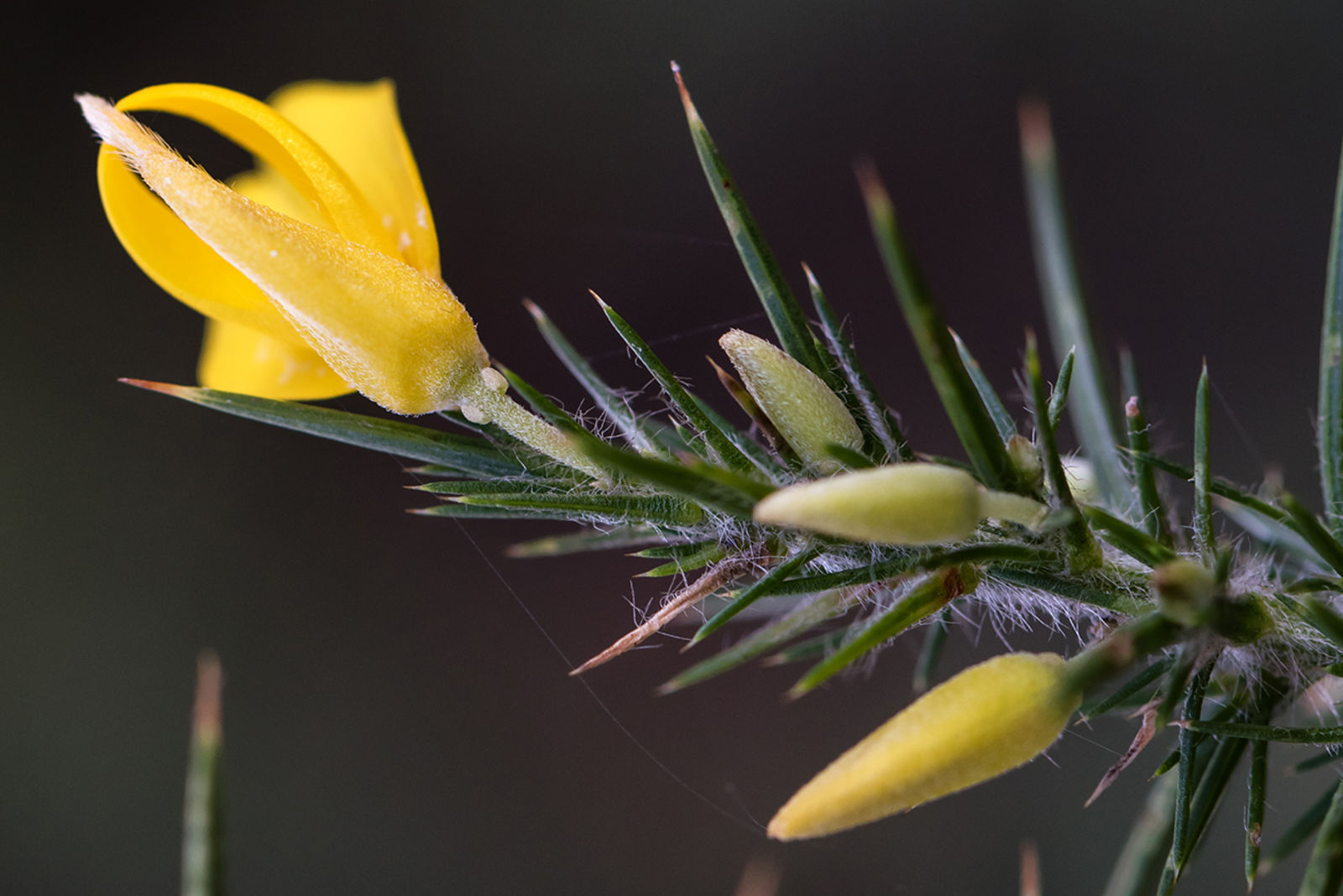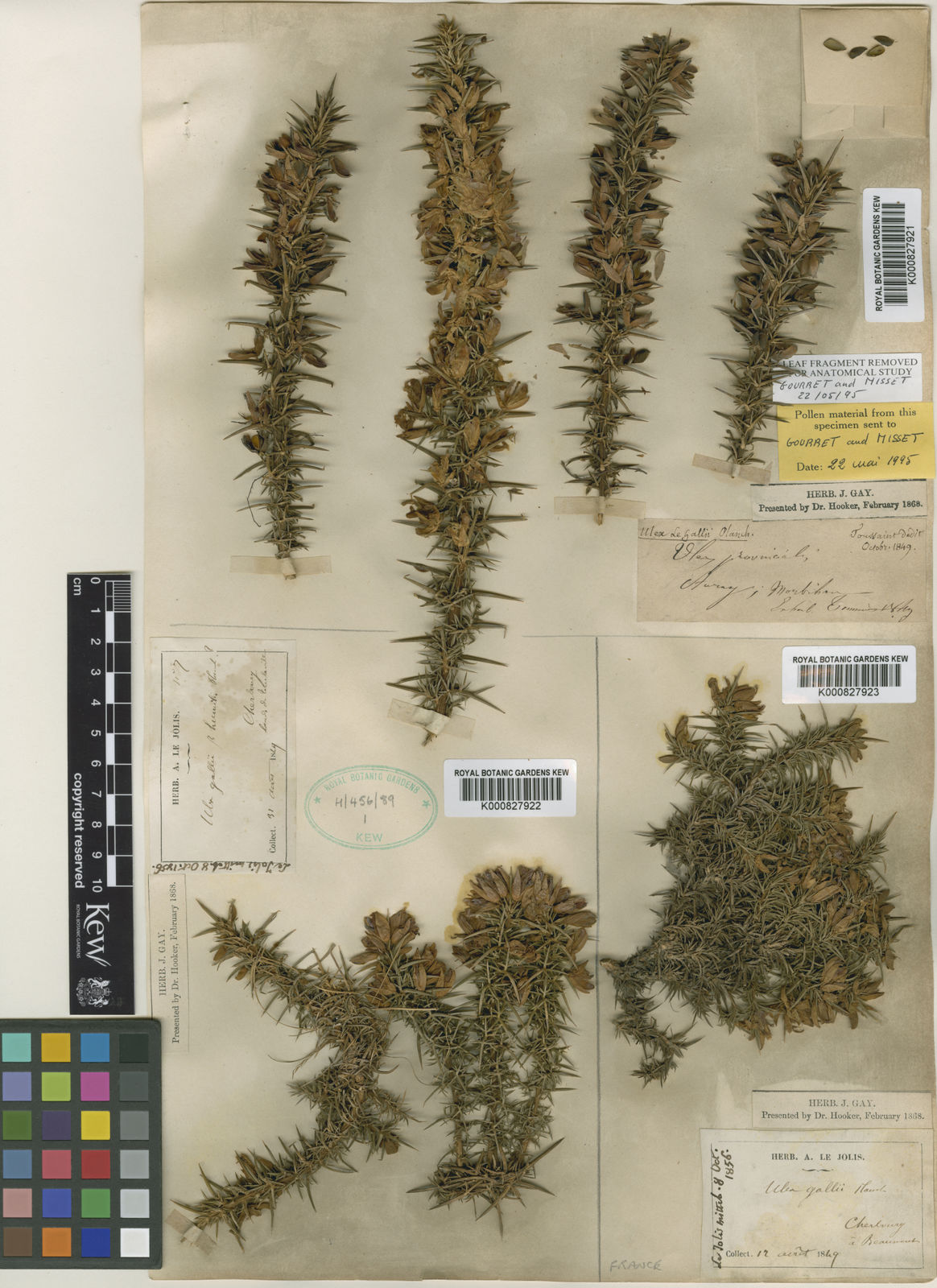Western Gorse
ulex gallii
Also known as: ["Western Furze","Gorse"]
Overview
A spiny, evergreen shrub native to Western Europe, known for its bright yellow flowers that bloom year-round.
Benefits & Perks
["long-flowering","wildlife attractant (bees, butterflies, birds)","drought tolerant","shade tolerant"]
Botanical Classification
| Phylum: | Tracheophyta |
| Class: | Magnoliopsida |
| Order: | Fabales |
| Family: | Fabaceae |
| Genus: | Ulex |
| Botanical Name: | Ulex gallii |
Plant Characteristics
Basic Information
- Category: Shrubs
- Suitable Location: rock gardens, coastal areas, or open, sunny locations
- Suitable For:
- Is Weed: No
- Allergenicity: moderate
Environmental Needs
- Climate: {"temperatureRange":"5–25°C"}
- Hardiness: {"zones":"7–10"}
- Misting: rarely required
- Drainage: Fast-draining to prevent root rot.
- Soil Type: Well-draining, sandy, or loamy soil with some organic matter.
Maintenance Level
- Maintenance Level: low
- Toughness Level: high
- Pruning Frequency: Annually in late winter or early spring before new growth begins.
- Pruning Intensity: Moderate; remove up to one-third of old growth to rejuvenate the plant.
Care Details
Ideal Sunlight Coverage:
Full sun (6–8 hours of direct sunlight daily).
Sunlight Tolerance Tips:
Acclimate gradually if moving from shade to full sun; protect from intense midday sun in hot climates; ensure good air circulation to prevent scorching.
Care Requirements
Care Difficulty
moderatemoderate
Sunlight
full sun
Full sun is essential; avoid deep shade; rotate regularly for even growth.
Watering
every 7–10 days during active growth, less frequently in winter
Water deeply but infrequently; avoid waterlogged soil; adjust frequency based on season and weather.
Soil
well-drained, sandy or loamy soil
pH: Slightly acidic to neutral (pH 6.0–7.0).
Ensure excellent drainage; avoid heavy clay soils; amend with organic matter if needed.
Temperature
Hardy in cool temperate climates, tolerating temperatures down to -10°C (14°F). Prefers mild summers and cool winters.
Protect from frost; avoid extreme heat; ensure good air circulation.
Fertilizing
rarely required, if used then every 3–4 months with a balanced, slow-release fertilizer
Use a slow-release fertilizer; avoid over-fertilizing; fertilize only during active growth.
Propagation
Methods
Stem cuttings or seed propagation.
Step-by-Step Propagation Guide
- Take cuttings.
- Apply hormone.
- Plant in medium.
- Maintain humidity.
- Transplant when rooted.
Best Time: Late spring to early summer for cuttings; autumn for seeds.
Environment
Warm (18–21°C), humid, and bright but indirect light for cuttings; consistent moisture for seeds.
Medium
Well-draining mix of sand and peat moss for cuttings; standard seed starting mix for seeds.
Hormone
Rooting hormone is beneficial for cuttings.
Timeline
Cuttings root in 4–8 weeks; seeds germinate in 3–6 weeks and establish over several months.
Tools Needed
Pruners, rooting hormone, pots, well-draining medium, misting spray bottle.
Quick Tips
Use healthy, non-flowering stems; maintain high humidity; avoid overwatering.
Pruning & Repotting
Pruning Guide
Method
Selective thinning and heading back to encourage branching.
Pruning Plan
Prune to maintain shape, encourage bushiness, and remove dead or weak growth.
Tools
Sharp bypass pruners, gloves, disinfectant.
Checklist
Disinfect tools; prune dead/weak stems; shape the plant; clean up debris.
Repotting Guide
Best Season
Early spring before active growth starts.
Pot Size
Increase pot size by 2–5 cm (1–2 inches) in diameter.
Method
Use a well-draining soil mix; gently tease out circling roots; place in a pot one size larger with fresh soil.
Suggestions
Repot only if the plant becomes root-bound or outgrows its container. Ulex gallii is often grown in the ground where repotting isn't needed.
Checklist
Check root boundness; prepare new pot; use fresh soil; water after repotting.
Advanced Care Tips
Watering Mastery
Watering Checklist
Check soil moisture; water deeply; ensure drainage; adjust for season.
How to Apply Water Properly
Water at the base of the plant, ensuring moisture reaches the root zone without wetting foliage. Water until it drains from the bottom, then allow excess to drain away.
Watering Schedule Tips
Water moderately during active growth in spring and summer, reducing frequency in fall and winter to prevent root rot. Allow the top inch of soil to dry between waterings.
Soil Improvement
Add sand or perlite for drainage; incorporate compost for fertility; ensure good aeration.
Temperature Stress Management
Signs of Temperature Issues
Chlorosis or leaf drop in extreme heat; stunted growth or browning in prolonged cold.
Cold Stress
Leaves may become brittle or discolored; growth slows or halts; risk of frost damage in severe cold.
Solution: Plant in sheltered locations; use frost cloth in extreme cold; ensure good drainage to prevent root freeze.
Hot Stress
Wilting, leaf scorch, or reduced flowering in excessive heat; may drop leaves to conserve water.
Solution: Provide partial shade during peak heat; increase watering; use mulch to retain soil moisture.
Fertilizing Guide
Fertilizing Checklist
Check growth phase; use diluted fertilizer; avoid foliage contact.
Fertilizing Method
Fertilize sparingly with a balanced, low-nitrogen fertilizer in early spring. Avoid feeding during dormancy.
Common Problems & Solutions
Toxicity Warning
Cats
ToxicCats are highly susceptible to the toxic effects of Ulex gallii, particularly from its seeds and berries. The alkaloids can induce severe gastrointestinal upset and neurological disturbances, which may be fatal if untreated.
⚠️ Symptoms:
🌿 Toxic Parts:
⚡ Toxic If:
if eaten
Dogs
ToxicIn dogs, ingestion of Ulex gallii can lead to significant toxicity, primarily affecting the gastrointestinal and nervous systems. The alkaloids present in the seeds and berries can cause severe poisoning, requiring prompt veterinary intervention.
⚠️ Symptoms:
🌿 Toxic Parts:
⚡ Toxic If:
if eaten
Humans
ToxicUlex gallii contains toxic compounds that can cause severe gastrointestinal distress and neurological symptoms upon ingestion. The plant's seeds and berries are particularly hazardous due to their high concentration of alkaloids, which interfere with normal physiological functions.
⚠️ Symptoms:
🌿 Toxic Parts:
⚡ Toxic If:
if eaten
Frequently Asked Questions
Q: Is Ulex gallii toxic to pets?
A: Yes, it is toxic to dogs and cats.
Q: Does Ulex gallii require much maintenance?
A: No, it has low maintenance needs once established.
Q: Does Ulex gallii attract wildlife?
A: Yes, it attracts bees, butterflies, and birds due to its flowers.
Quick Reference
| Family: | Fabaceae |
| Care: | moderate |
| Light: | full sun |
| Water: | every 7–10 days during activ |
Get Expert Care Tips
Download the Plantious app for personalized care reminders and plant identification!
Google Play App Store







